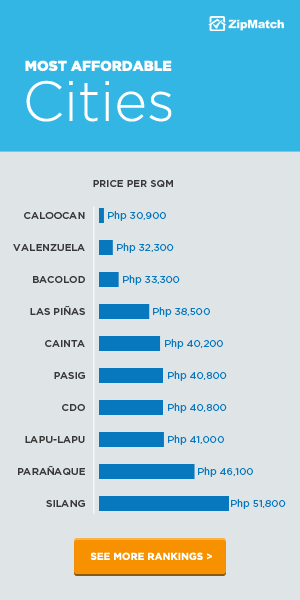Buying a real estate property or land in the Philippines is a big thing. After all, this involves contracts, large amounts of money, and of course, your trust in the seller that you’re not about to be fooled into buying something that looks too good to be true. That’s why you should make sure you’re covered before you sign that contract and hand over the money.
To ensure the safety of your property purchase, you have to conduct your own due diligence. Of course it’s always best to consult with licensed real estate professionals when buying property. However, you can do your part by checking the veracity of the title you’re about to purchase.
Check out this video on to how to know your property title is authentic:
Here are a few things to keep in mind when you’re conducting your due diligence:
- Original Certificate of Title. The original title, which is stored in the Register of Deeds.
- Owner’s Duplicate Copy. An exact or carbon copy of the Original Certificate of Title that’s given to the owner of the property.
- Transfer Certificate of Title. When the title is to be transferred from the owner to the buyer, the original Owner’s Duplicate Copy should be the same as the Transfer Certificate of Title.
- Judicial Forms. The government forms used in conducting the transaction with accompanying serial numbers. There are different kinds of judicial forms depending on the purpose.
- No. 108-D Original Certificate of Title – Owner’s Duplicate
- No. 109-D Transfer Certificate of Title – Owner’s Duplicate
- LRC Form 1-A Condominium Certificate of Title – -Owner’s Duplicate
Take note of these forms:
With that out of the way, here are 12 ways you can check if your title is real or fake based on the guidelines by the Land Registration Authority (LRA).
1. Check the Paper Material
One of the first things you can check to immediately spot a fake title is the physical appearance of the paper. The Bangko Sentral ng Pilipinas (BSP) is solely responsible for printing the judiciary forms used in the preparation of the property titles. They use a special paper composed of 50% cotton and 50% chemical wood pulp with artificially colored silk fibers. As such there are security features you need to look out for in its physical appearance to ensure its authenticity:
- NALTDRA or LRA watermark that can be seen when held against the light.
- fibers of the paper material
- planchettes or the colored circular patterns on the title
- intaglio (technique used in printmaking) on border
According to LRA, fake titles are usually printed in forms made of cartolina or material of inferior quality.
2. Check the Copies
First, check the initials, signatures, technical description, annotation and other component elements in the front and the back of the original copy are exactly the same as the duplicate copy. After all, they’re supposed to be carbon copies. If you see any difference, you better be suspicious.
3. Check the Serial Number
The serial number of Judicial Forms for the original copy should be printed in red while the duplicate copy should be in black. The serial number of the title should follow the serial numbers of the other titles from the particular Registries of Deeds from which your title came from.
4. Check the Dates
Likewise, a number is assigned to the judicial form found on the upper left-hand corner of the form. Below the number is the year when the form was printed or revised. If the judicial form of your title was prepared before the date when the form was printed or revised, then you better start worrying.
5. Check the Title and Seal
The duplicate copy should have the words OWNER’S DUPLICATE CERTIFICATE on the left side margin of the judicial form. There should also be a red seal—which should not blot or stain when wet—affixed on the lower left corner of the form. The original copy does not contain either of these feature.
6. Check the Title Number
Check the last two digits of the title number, which should match the page number of the registration book noted on the upper right corner of the title.
7. Check the Reconstituted Tags
A lost or destroyed title needs to be reconstituted. A reconstituted original copy of the title should have the letters “RO” before the title number while a reconstituted transfer certificate of title should then have the letters “RT” before the title number.
8. Check the Register of Deeds
Check if the person who signed the title was really the Register of Deeds at the time when the title was issued.
9. Check the Entry Book
Check if the entry of a related transaction in the Primary Entry Book to see if the title was issued on the basis of a duly registered document.
10. Check the Enumeration Book
Check the Enumeration Book or logbook to see which personnel was assigned to prepare the title on a certain date and the serial number of the judicial form used.
11. Check the Releasing Book
Check the Releasing Book to see if there was a title of such number that was released by the registry on that date.
12. Check the History
Lastly, track the history of the title to see if the source is genuine. You might have to go back all the way to the mother title, the derivate titles and other relevant documents.
Following the above steps is a good way to avoid being victimized by fake land titles to supposedly cheap real estate properties being sold by syndicates. Most of the time, the offered price is generally too low vis-à-vis the current fair market value.
In conclusion, when looking for a new house and lot or condominium for sale, always remember the ancient saying caveat emptor or “buyer beware.”










